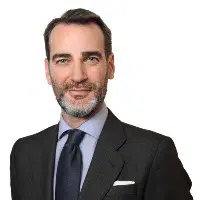INSURANCE | 14.09.2021
Reinsurers must beware the dangers of opportunism
Increasing claims activity and continued under-pricing in several niches and markets will lead to some reinsurers looking to unduly leverage this situation to their advantage (This article by Javier San Basilio was originally published in the British magazine Insurance Day)
Increasing natural catastrophes – particularly unmodelled ones and secondary perils – and escalating cyber risks are fuelling demand for reinsurance in a hardening global reinsurance market. This brings opportunities for reinsurers to grow their books and improve their combined ratios. However, there is a difference between making the most of opportunities and being opportunistic.
At Mapfre Re, we are continuing our traditional focus on building sustainable partnerships as we believe not only is this better for us in the long term, but also for our clients. After years of largely soft market conditions, 2020 and 2021 have seen some significant price increases in many markets and in many lines of business because of a marked rise in claims activities. Of course, this has not been a homogenous increase, but we have certainly seen some positive trends. Large, complex corporate industrial insurance, for example, has seen significant hardening, as have other specialty lines. The Japanese market has also seen some very large price increases.
In general, these increases have come in markets or bussiness lines where prices had been too low for years, making it difficult to price correctly for the risks we were underwriting. For that reason, the increases are very welcome. However, prices remain too low in several niches, especially considering increased complexity and loss frequencies. Rate increases on the carrier side on some areas have not yet trickled down to reinsurance. While we might have been good, as an industry, at modelling, pricing and controlling our “main perils” or events and have thus designed reinsurance structures geared towards protecting against these peak perils, probably not enough focus has been put on preventing, measuring and pricing for secondary perils or for medium-sized catastrophes, of which we have definitely seen an increase in frequency.
As a result of increasing claims activities and continued underpricing in several niches and markets, we are likely to see some reinsurers looking to leverage this situation. They will enter hard markets – or those where prices are set to rise significantly – just for as long as those prices remain high, only to pull out once those markets begin to soften. We have already seen some market players raise capital specifically to target such niches, and I would expect to see more of this in the next 12 to 18 months. It is not for me to criticise these players for this approach. They will bring extra capacity where it is badly needed in some markets and lines of business and they will no doubt generate healthy profits if they are able to time the market accurately.
However, this is not a strategy we seek to emulate. Jumping into a hardening market and then jumping out when it begins to soften makes sense when you look at the numbers in the short term, but it is counter-productive when it comes to building trusted partnerships with clients. I cannot imagine anything worse than going to a client one day to say we will no longer be working with them because
changing market conditions mean we can no longer afford to underwrite its business. It runs counter to our entire philosophy.
Relationships matter
By definition, we are not opportunistic. We prefer to support our traditional client base with a more long-term perspective. To put it another way, for us the relationship with the cedant is more important than an individual transaction. When we deploy our capital with a particular client, we try to stick with that client and have faith they, in turn, will give us good business and a profitable relationship over time.
Indeed, our chief executive, Eduardo Perez de Lema, described this succinctly as our “long-term sustainable partner philosophy” in a recent podcast. He added that when we transact reinsurance, it is for capital management, risk management, volatility management and product development with our partners. It is not something we use for competitive advantage. That said, we do believe there to be competitive benefits to our approach. At Mapfre Re, for instance, because of our size, we are not overexposed anywhere, so we do not have to worry as much as some other reinsurers about curbing potential volatility. We are able to view risks from a long-term perspective without the urgent need to generate high returns quickly.
At the same time, our network of global offices means we are close to our clients even now when international travel is more restricted than before. This physical closeness and local market knowledge allow us to understand our clients and become even closer so we can continue to grow together.
Commitment
Our clients value this commitment and this level of understanding. It helps to create opportunities we would not have otherwise, which of course does help the bottom line in the end. Many of our existing partners have done well in the current hardening market, and that is likely to lead to more business, because they trust us and value our previous commitment to them.
One of the great things about our industry is it is a free marketplace with many parties, all with a different appetite and approach to risk and pricing. In some respects, Mapfre Re could be described as a boring company. There are some in the reinsurance market who might take offence to being described this way, but to me it is a good thing. It is an approach that over the long term has enabled us to perform well against our peers.
So, while taking short-term opportunities may be good for shortterm profitability, it is not going to benefit cedants in the longer term; and without cedants, what kind of business would we have?

